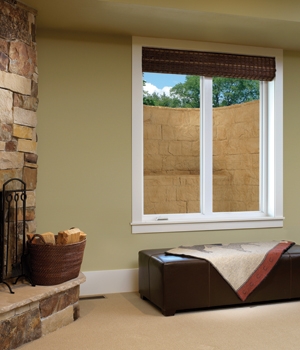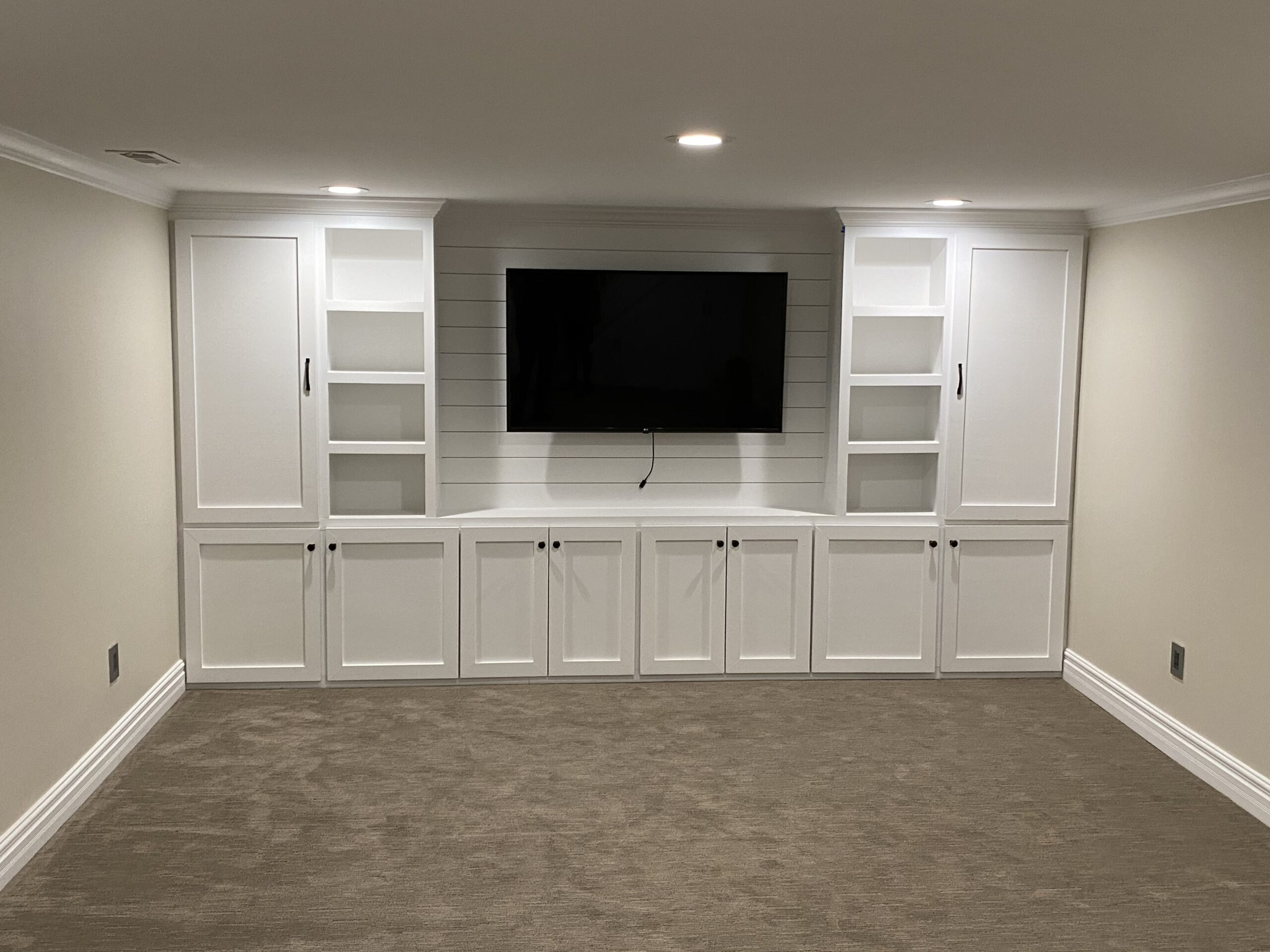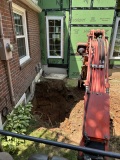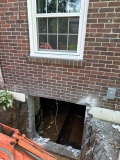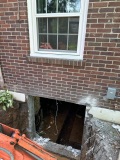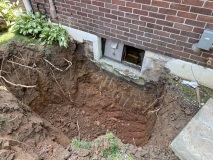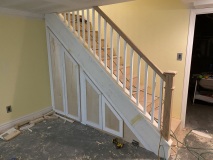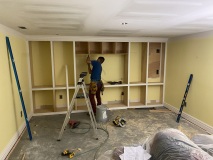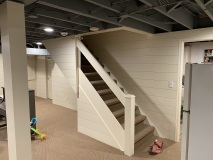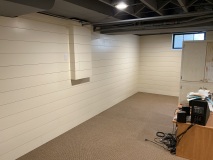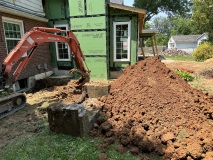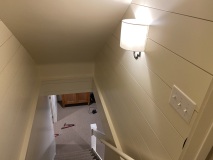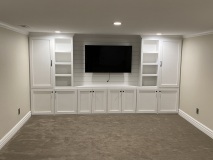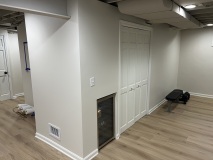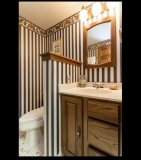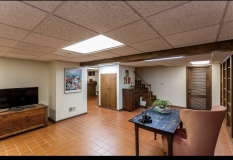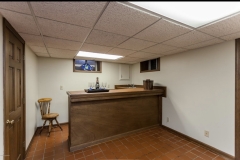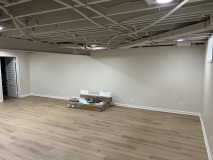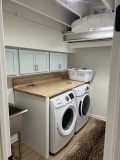When it comes to waterproofing basements, we utilize methods like interior sealants, exterior membranes, French drain systems, sump pump installations, waterproofing paint, injection grouting, drainage systems, exterior excavations, and vapor barriers. Interior sealants help seal cracks for a dry environment. Exterior membranes offer a protective barrier against water intrusion. French drains redirect water away from the foundation. Sump pumps efficiently remove water. Waterproofing paint creates a barrier. Injection grouting fills voids. Drainage systems redirect water flow. Exterior excavations allow for thorough inspections. Vapor barriers prevent water vapor permeation. These methods are crucial for safeguarding against potential damage.
Key Takeaways
- Interior sealants for crack repair prevent water infiltration.
- Exterior waterproofing with membranes shields against water intrusion.
- French drain system efficiently channels water away from the foundation.
- Sump pump installation with proper selection and reliable float switch.
- Injection grouting seals voids and cracks to prevent water entry.
Interior Sealants
When waterproofing basements, interior sealants are often applied to prevent water infiltration through cracks and porous surfaces. Interior waterproofing solutions play a crucial role in maintaining a dry and healthy basement environment. One common method is basement crack repair, which involves identifying and sealing any cracks in the foundation walls or floors. This process helps to prevent water from seeping into the basement and causing damage.
Moisture control is another key aspect of interior waterproofing. By applying sealants to the interior surfaces of the basement walls and floors, moisture intrusion can be significantly reduced. Sealant application is a meticulous process that requires attention to detail to ensure proper coverage and adhesion.
Exterior Membranes
To further enhance basement waterproofing, the application of exterior membranes serves as a protective barrier against water intrusion from the outside. Waterproofing membranes are typically made of materials like rubberized asphalt or thermoplastic. These membranes are applied to the exterior foundation walls, creating a continuous waterproof barrier that prevents water from seeping into the basement.
The benefits of using waterproofing membranes on the exterior of a basement are significant. They provide superior protection against water infiltration, reducing the risk of moisture-related issues such as mold, mildew, and structural damage. Additionally, exterior membranes can prolong the lifespan of the foundation by shielding it from water damage.
When it comes to membrane maintenance, periodic inspections are essential to ensure the membranes remain intact and effective. Any damage or deterioration should be promptly addressed to maintain the waterproofing integrity of the system. While the initial cost of installing exterior membranes may be higher compared to other waterproofing methods, the long-term benefits in terms of protection and durability make it a worthwhile investment for homeowners.
French Drain System
Let’s explore the essential components of a French Drain System, including the correct installation of drainage pipes to efficiently channel water away from the foundation. Integrating a sump pump into the system is crucial for effectively removing water that accumulates in the drain pipes. Additionally, implementing exterior waterproofing techniques alongside the French Drain System can provide comprehensive protection against water infiltration in basements.
Drainage Pipe Installation
Installing a French drain system involves excavating a trench, laying a perforated pipe with a fabric sock, and backfilling with gravel to facilitate proper drainage around a basement foundation. When it comes to pipe maintenance, it is crucial to ensure that the perforated pipe is free from debris and clogs to maintain optimal water flow. Regular inspection and cleaning of the fabric sock can prevent sediment build-up, ensuring the system functions effectively. Selecting high-quality waterproofing materials for the pipe and surrounding gravel is essential to enhance durability and prevent water infiltration. Proper installation and maintenance of the drainage pipe are key factors in ensuring the French drain system operates efficiently to protect the basement from water damage.
Sump Pump Integration
Efficiently incorporating a sump pump into the French drain system enhances its functionality by effectively removing excess water from the basement foundation. Sump pump maintenance is crucial to ensure optimal operation. Regular checks should be conducted on the pump, float switch, and backup systems to prevent failures during heavy rainfall. It is recommended to test the sump pump by pouring water into the sump pit to verify proper functioning. Backup systems such as battery-powered pumps or water-powered backup pumps provide an extra layer of protection in case of power outages or pump malfunctions. Properly integrating these components within the French drain system ensures a reliable solution for managing water infiltration in basements.
Exterior Waterproofing Techniques
To enhance the effectiveness of basement waterproofing, incorporating exterior waterproofing techniques such as the French Drain System is vital for preventing water infiltration. When implementing this method, one may encounter excavation challenges due to the need to dig around the perimeter of the foundation. This process can be labor-intensive and may require specialized equipment to ensure proper installation. However, the French Drain System, consisting of a perforated pipe surrounded by gravel, is highly effective at directing water away from the foundation. Waterproofing materials such as a high-quality drainage membrane are often used in conjunction with this system to provide an additional layer of protection against moisture intrusion. Proper installation and maintenance of the French Drain System can significantly reduce the risk of basement flooding.
Sump Pump Installation
When considering sump pump installation, crucial aspects include pump selection tips and an overview of the installation process. We will address the importance of choosing the right pump for your specific needs and outline the steps involved in properly installing a sump pump system. Understanding these key points is fundamental in ensuring an effective waterproofing solution for your basement.
Pump Selection Tips
In selecting a sump pump for installation, consider the water volume capacity required for effective basement waterproofing. The pump’s capacity should match or exceed the amount of water that needs to be drained to prevent flooding. Additionally, choose a pump with a reliable float switch mechanism to ensure proper activation when water levels rise. When it comes to maintenance, regularly inspect the pump, clean the inlet screen, and test the float switch to guarantee functionality. In case of any issues, conduct pump troubleshooting by checking power sources, connections, and ensuring the pump is free from debris. Proper pump maintenance and troubleshooting are crucial for the sump pump to operate efficiently in keeping your basement dry and protected from water damage.
Installation Process Overview
For a successful installation of a sump pump, prioritize assessing the designated location’s suitability and ensuring proper electrical connections before proceeding with the waterproofing process. Waterproofing materials selection plays a crucial role in the effectiveness of the sump pump installation. Choose materials that are durable and suitable for the specific conditions of your basement. When installing the sump pump, make sure to follow the manufacturer’s instructions carefully to guarantee optimal performance. Consider cost-effective solutions that provide long-term benefits to prevent water damage and maintain a dry basement. Proper installation of the sump pump is essential for its functionality and longevity, so attention to detail during the process is key. By selecting the right materials and following best practices, you can ensure a reliable waterproofing solution for your basement.
Basement Waterproofing Paint
To effectively protect basements from water damage, applying basement waterproofing paint is a crucial step in maintaining a dry and secure environment. Waterproofing products such as latex-based or cementitious coatings are commonly used for this purpose. These products create a barrier that prevents water from seeping through the walls while still allowing the walls to breathe, reducing the risk of mold and mildew growth.
When it comes to application techniques, thorough surface preparation is essential. This includes cleaning the walls, repairing any cracks or holes, and ensuring the surface is smooth and dry before applying the waterproofing paint. Proper ventilation is also crucial during application to ensure the fumes dissipate safely.
Basement waterproofing paint should be applied in multiple coats, following the manufacturer’s instructions regarding drying times between coats. It is important to apply the paint evenly and consistently to achieve the best results. Regular maintenance and reapplication may be necessary to ensure continued protection against water infiltration.
Injection Grouting
We implement injection grouting as a strategic method to effectively seal and strengthen the foundation of basements against water intrusion. Injection grouting is a popular choice in waterproofing solutions due to its ability to fill voids, cracks, and joints within the foundation. The process involves injecting a flowable material such as polyurethane or epoxy into the affected areas under pressure, creating a tight seal that prevents water from seeping through.
Grouting techniques vary based on the specific needs of the foundation. For instance, permeation grouting is suitable for compacting loose soil and stabilizing the ground, while pressure grouting is ideal for filling larger voids and cracks. In some cases, chemical grouting may be used to improve soil properties and create a more durable foundation.
When considering waterproofing solutions for basements, injection grouting stands out for its effectiveness in sealing off potential entry points for water. By addressing these vulnerabilities, homeowners can protect their basements from moisture-related issues and ensure a dry and stable living environment.
Drainage Tiles
Utilizing drainage tiles is a fundamental component in managing water infiltration in basement waterproofing systems. These tiles are part of a drainage system designed to redirect water away from the foundation, preventing it from seeping into the basement. The tiles are typically installed alongside waterproof membranes to ensure optimal protection against water intrusion.
Drainage tiles work by creating a channel for water to flow through, effectively collecting and directing it to a sump pump or a safe outlet away from the property. The tiles are perforated to allow water to enter and then efficiently move through the system. This process helps alleviate hydrostatic pressure against the foundation walls, reducing the risk of leaks and moisture issues in the basement.
When combined with waterproof membranes, drainage tiles provide a comprehensive solution for keeping basements dry and structurally sound. Proper installation and maintenance of drainage tiles are crucial to the effectiveness of the waterproofing system, ensuring long-term protection against water damage.
Exterior Excavation
Excavating the exterior of a building is a critical step in implementing a comprehensive waterproofing strategy for basements. Soil excavation around the foundation allows for the inspection and repair of any existing foundation issues that may be contributing to water seepage. This process involves carefully digging around the perimeter of the building, exposing the foundation for closer examination. Any cracks, gaps, or signs of deterioration in the foundation can then be identified and addressed promptly to prevent further water intrusion.
Foundation repair is often necessary during exterior excavation to ensure the structural integrity of the building. This may involve filling cracks with appropriate sealants, reinforcing weakened areas, or even underpinning sections of the foundation to enhance stability. By addressing these foundation concerns during the excavation process, we can mitigate the risk of future water damage and create a more durable waterproofing solution for the basement.
Vapor Barrier Installation
To effectively safeguard basements against moisture infiltration, the installation of a vapor barrier is a crucial component of the waterproofing process. Moisture control is essential in preventing water damage and mold growth in basements. A vapor barrier acts as a protective layer, preventing water vapor from permeating through the walls and floors of the basement.
When installing a vapor barrier, it is crucial to ensure proper sealing and overlap of the barrier to create a continuous membrane. This helps maintain the integrity of the barrier and enhances its effectiveness in preventing moisture penetration. Additionally, integrating ventilation systems in conjunction with the vapor barrier installation can further enhance moisture control in the basement.
Proper installation of a vapor barrier requires attention to detail and adherence to recommended practices to ensure optimal performance. By implementing a vapor barrier as part of the waterproofing process, homeowners can significantly reduce the risk of moisture-related issues in their basements.
Frequently Asked Questions
Can Waterproofing Methods Be Combined for Better Protection?
Yes, waterproofing methods can be combined for better protection. By integrating different techniques, we improve cost efficiency and effectiveness. However, it’s crucial to ensure compatibility between methods to avoid issues and reduce maintenance requirements. Combining methods like exterior waterproofing with interior sealants can provide a comprehensive solution. It’s essential to consult with professionals to determine the best combination for your specific basement waterproofing needs.
How Long Does Waterproofing Typically Last in Basements?
Waterproofing durability in basements hinges on various factors such as the quality of materials, installation, and maintenance. Adequate basement maintenance, including regular inspections and addressing issues promptly, can significantly extend the lifespan of waterproofing methods. Typically, waterproofing can last anywhere from 10 to 15 years, but this can vary based on the specific method used, environmental conditions, and how well the system is maintained.
Are There Eco-Friendly Waterproofing Options Available?
Yes, there are eco-friendly waterproofing options available that provide sustainable solutions for basement waterproofing needs. Environmentally friendly products, such as biodegradable coatings, offer green alternatives to traditional methods. These options not only protect your basement but also minimize the impact on the environment. By choosing these biodegradable options, you can ensure that your waterproofing efforts align with your eco-conscious values.
Can Waterproofing Prevent Mold and Mildew Growth?
Yes, waterproofing can effectively prevent mold and mildew growth by controlling moisture levels in basements. This moisture control is crucial as mold and mildew thrive in damp environments. By waterproofing, we create a barrier that prevents water seepage, reducing the likelihood of mold and mildew formation. This not only protects the structural integrity of the building but also offers significant health benefits by minimizing allergens and potential respiratory issues associated with mold exposure.
Will Waterproofing Affect the Resale Value of My Home?
Waterproofing our home can positively impact its resale value. By preventing water damage, we maintain the structural integrity, which is attractive to potential buyers. Additionally, a dry basement allows for various landscaping options and interior design possibilities, enhancing the overall appeal of the property. It is a wise investment that not only protects the home but also adds value in terms of aesthetics and functionality.
Other Basement Remodel Topics
Types of Lighting Fixtures for Basement Renovation
Types of Waterproofing Methods for Basements
Creative Ideas for Basement Space Utilization
Navigating the Permitting Process for Basement Renovation
Cost Saving Strategies for Basement Renovation
Importance of Proper Lighting in Basement Remodel
Importance of Waterproofing in Basement Remodeling
Maximizing Space in Your Basement Remodel
Understanding Building Permits for Your Basement Remodel



